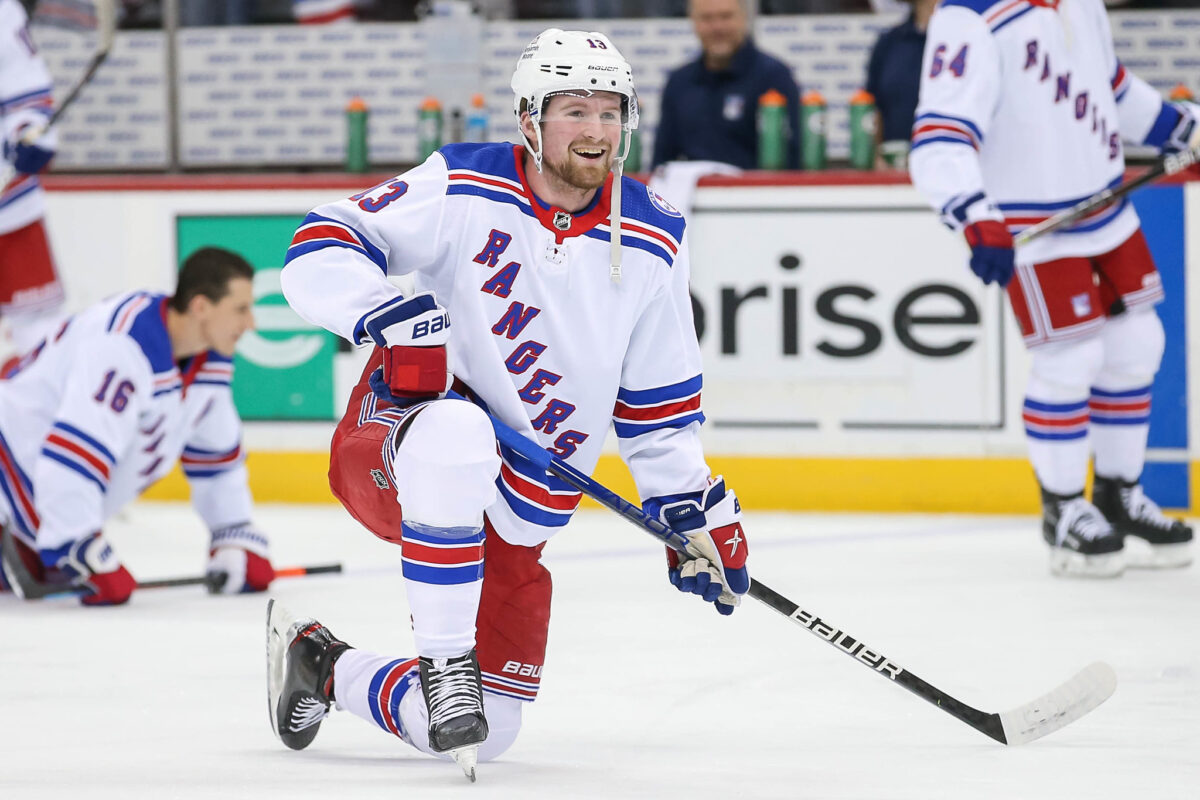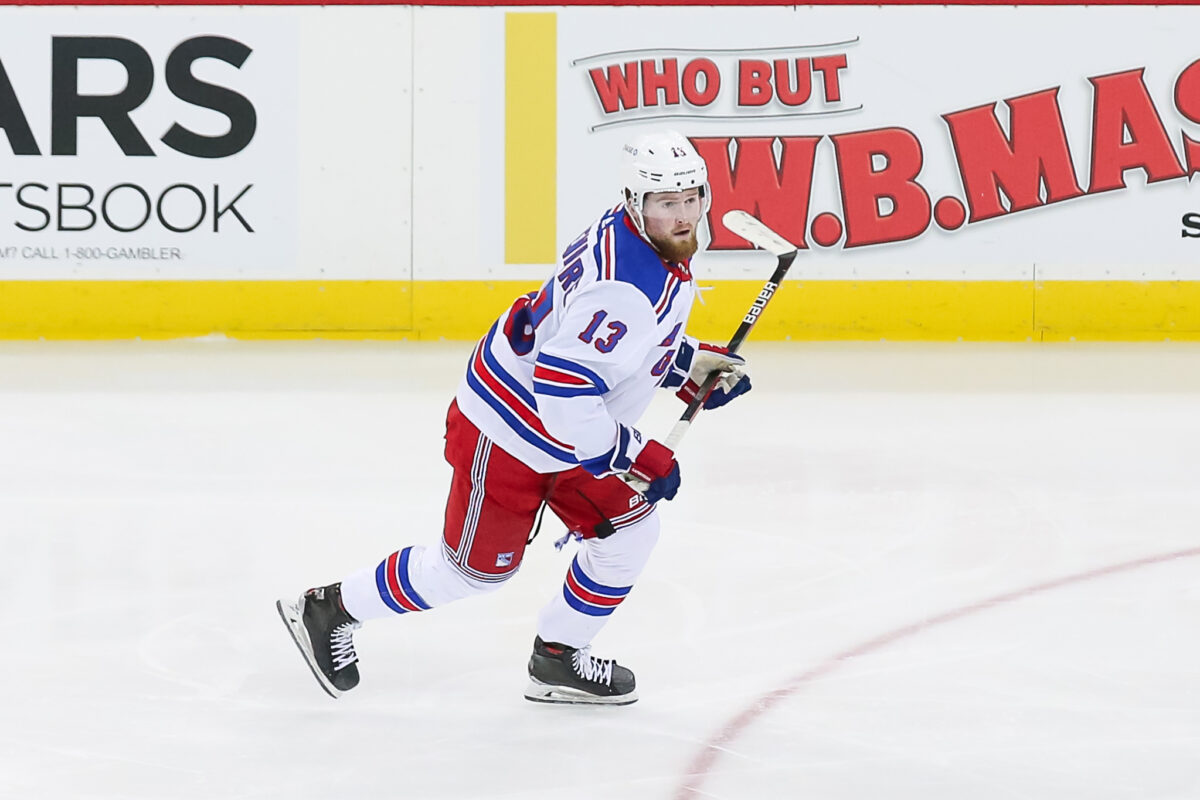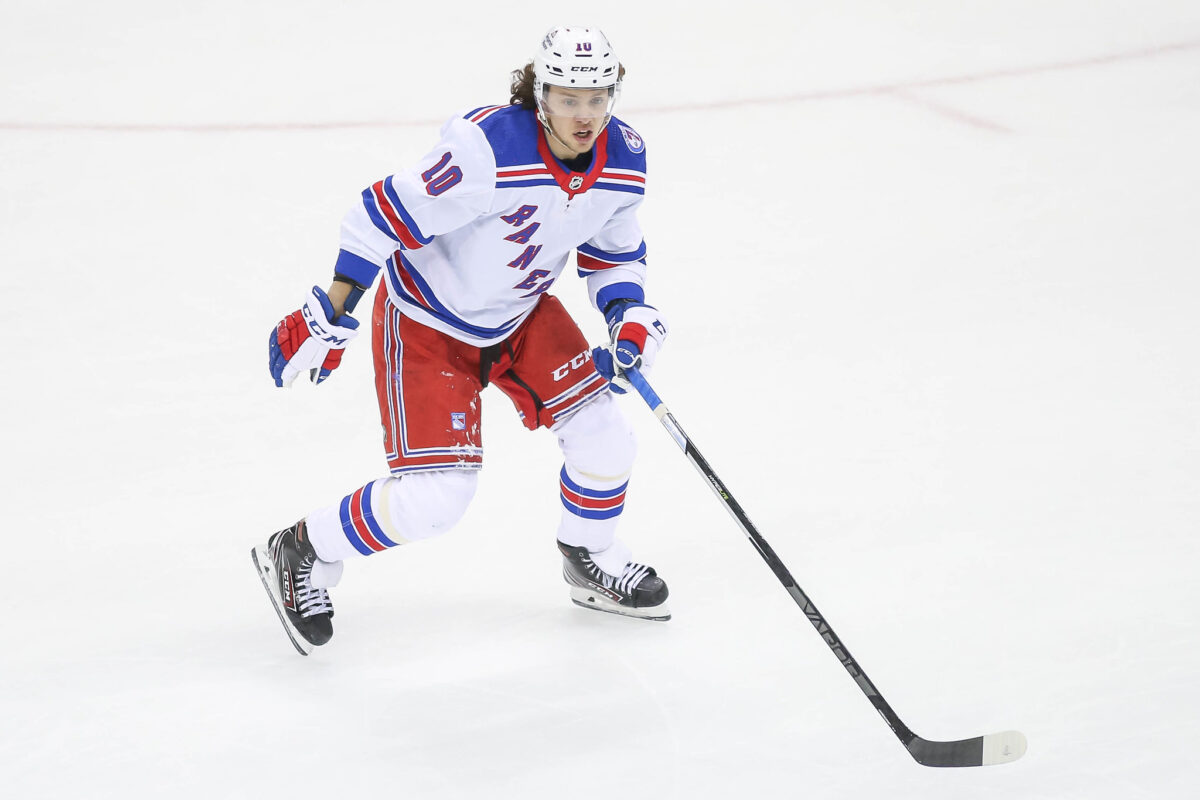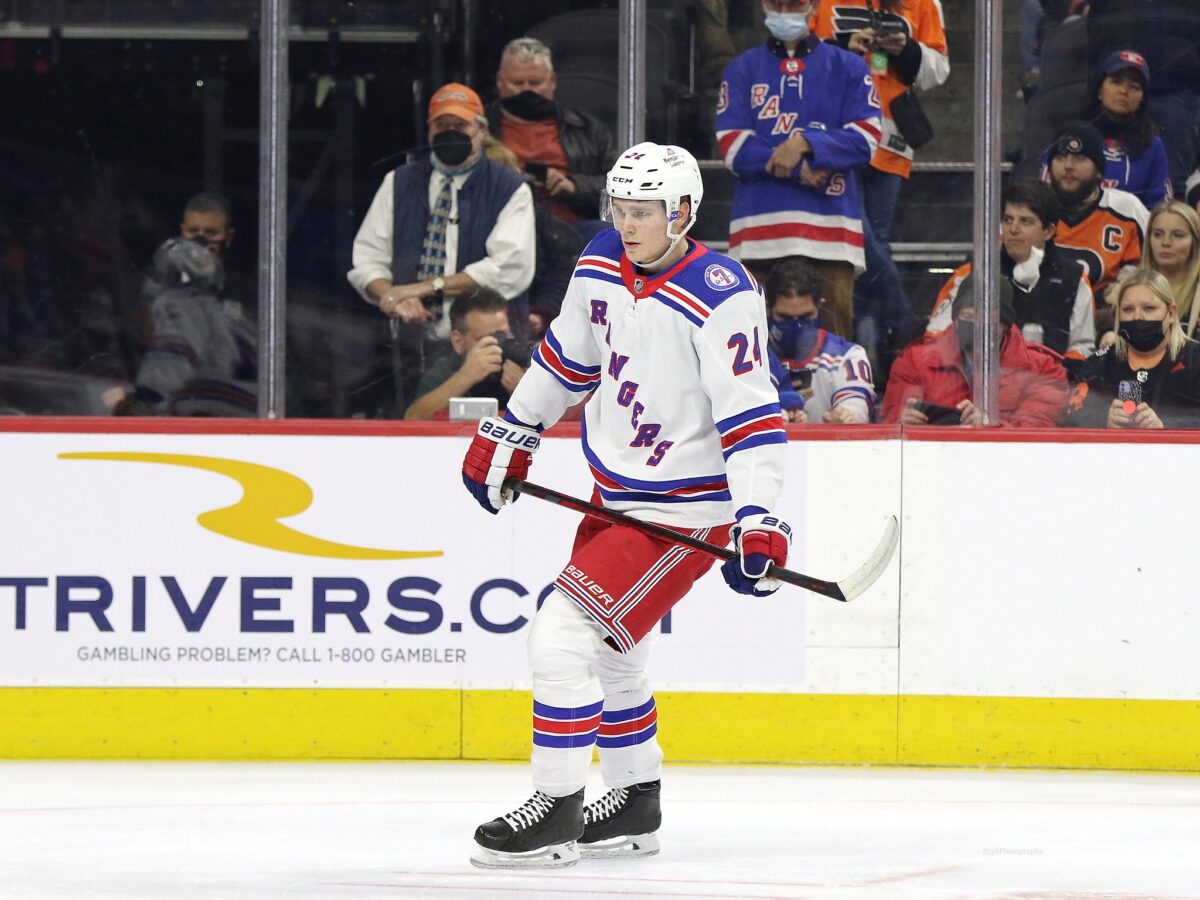Alexis Lafreniere must move to right wing!!
The urgency around this issue seems to be driven as much by the New York Rangers’ lineup challenges as by the fan base’s desire to see the No. 1 overall pick in 2020 develop into a top-six superstar as soon as possible. Get him up on the top two lines, the thinking goes. So what if he’s blocked at his natural left wing spot by Chris Kreider and Artemi Panarin? Put Lafreniere on the right, where the Rangers are suddenly thin after offseason free-agent departures. He’ll make it work.
Perhaps the sentiment is correct. Perhaps Lafreniere will have no choice but to switch wings this fall as the formative early part of his NHL development really begins, the COVID-19 pandemic which hampered his first two seasons less of a factor, at least in theory.

Even so, another question can be asked about the situation as Lafreniere enters the third and final season of his entry-level contract: What’s the rush?
Why MUST Lafreniere, with barely a season and a half of regular-season NHL games under his belt, and who is supposedly a future cornerstone of the organization, be switched this season to a position with which he’s not terribly familiar, having turned in mixed results in limited time playing there?
Switching Lafreniere’s Spot Must be Done for Right Reasons
If the Rangers are determined to do this in 2022-23 because the departures of Frank Vatrano and Andrew Copp have left the club hurting at right wing, well, that seems like short-sighted and flawed logic. Whether the Blueshirts consider themselves to be past the rebuilding phase or not, asking a talented but inexperienced young player to learn the intricacies of a new position while he’s still trying to learn the intricacies of the NHL smells desperate and forced.
Or if the Rangers are determined to push Lafreniere to the right in an attempt to begin justifying his selection at the top of the draft two years ago, that seems even more desperate and forced. Lafreniere might not have taken the league by storm out of the gate the way numerous recent top overall picks have, but trying to rush the process of reaching stardom might result in him never doing so at all.

So how can the Rangers explain leaving Lafreniere on the third line, where he’s often played during his 135-game stint in the NHL? Easily. The club would be allowing Lafreniere to continue establishing himself while playing his natural left wing spot – and in a not-so-small side benefit, replicate the offensive depth that served the Blueshirts so well in their wholly unexpected run to the Eastern Conference Final last season.
Despite its playoff success, we may not see the Kid Line again, as coach Gerard Gallant might prefer a more veteran presence in the trio – and Kaapo Kakko, the right wing on the unit, could be in line for a promotion to the top six. Nevertheless, a third line built around center Filip Chytil and Lafreniere gives the Rangers the potentially longer lineup that made a significant difference in their coming within two wins of the Stanley Cup Final.
Lafreniere has shown promise in fits and starts in his two seasons. He came on late in his pandemic-shortened rookie season, finishing with 12 goals and nine assists while playing all 56 games. Last season, he delivered 19 goals and 12 assists in 79 games, with all of the goals and 10 of the assists coming at even strength, as Lafreniere rarely receives power-play time. He remains a kid, not turning 21 until two days before the season starts, as he grows into adulthood while also trying to become a productive NHL player.
Being a kid, kid gloves are still required here. Demanding results so early in a career stunted by a pandemic seems to have the potential to backfire badly. In fact, an aversion to doing just that – rushing young talent – is exactly why, at least in part, the Rangers inked Panarin to a massive free-agent deal during the 2019 offseason and then re-signed Kreider in February 2020. The idea was that those established scorers could provide cover for the growing pool of talented youth on the roster, allowing the young’uns to develop at their own pace and not have to produce right away.
Kreider and Panarin have largely done that, particularly last season, when both turned in career performances to help carry the club offensively. Is now the time to abandon that approach, to push Lafreniere out of the nest? Again, what is the reason for the urgency for him to establish himself as a top-six NHL forward at a new position after 135 games?
No Guarantee Lafreniere Will Be Capable of Handling a Move Right
Part of it, of course, is the elephant in the (locker) room: The Rangers had not yet won the draft lottery when they committed long-term to Kreider and Panarin. The top prospect in that 2020 draft happened to play the same spot, but then-general manager Jeff Gorton refused to draft on positional need, instead adhering to the philosophy of selecting the best player available.
That’s sound thinking, but the fact of the matter is that like Kreider and Panarin, Lafreniere appears to be at his best on the left. Lafreniere will, in theory, be here longer than those two, but the earliest one of those top-six left-wing spots will open up is after the 2025-26 season, when Panarin’s seven-year deal expires. Kreider’s contract ends the season after that.

The fact of the matter is, not all players can make the switch. If it’s so simple, why not move Panarin, the established superstar and a right-handed shot, to the right side and put Lafreniere on the left of that line? The answer: Panarin’s game is most effective when he’s on the left, pulling up along the boards after gaining the blue line and hitting trailers with crisp passes. His style and talents are best suited to playing that position. Who is to say Lafreniere will be any different?
That question will continue to hang over the roster. Leaving Lafreniere on the left side of the third line can be viewed cynically as putting off the inevitable, but much of the reasoning emanating from social media, not to mention some of the media that cover the team, seems overheated and at times illogical. It’s difficult to understand why Lafreniere HAS to make the move now, so early into his NHL experience.
Related: Rangers Need Kakko to Step Up in 2022-23
There are options at right wing. Sammy Blais, healthy after losing most of his first season in a Blueshirt to a knee injury, had shown promise playing with Kreider and center Mika Zibanejad, his work retrieving pucks along the walls and getting to the net complementing the games of the other two well. Kakko, the No. 2 overall pick in 2019 who endured a difficult and injury-marred 2021-22, has been in the NHL a year longer than Lafreniere and might be ready to start putting it all together.

Well-regarded prospect Will Cuylle has a chance to make the team, and perhaps Vitali Kravtsov begins to put his early-career drama behind him and deliver on the promise the organization saw in drafting him ninth overall in 2018. Brennan Othmann, the team’s first-round pick in 2021 who tore through the Ontario Hockey League last season, is a long shot but a very intriguing possibility.
Priority Should Be Lafreniere’s Development, Not His Position
None of those players are proven. Then again, neither is Lafreniere. What the Saint-Eustache, Quebec native did show was his ability to play an effective, edgy game – the kind the Rangers foresaw when they zeroed in on him with the top pick two years ago – while playing on Chytil’s left in the postseason. That experience can only have fueled his confidence – and it gave the Rangers a dangerous third line, one that for stretches was the club’s best in the playoffs. Why not take the long view for at least one more season and benefit in both ways, as the Rangers did last spring?
Lafreniere’s future might indeed be as a right wing. He may very well come to thrive at the spot. Yet moving him there seems less important than giving him space to arrive as an NHLer. The Rangers, who certainly don’t want to take a step back for player development purposes in 2022-23, have the opportunity to provide that for another season.

The world won’t end if Lafreniere spends 2022-23 playing behind Kreider and Panarin again. In fact, the Blueshirts’ world might end up being a better place – both in the 2023 playoffs and beyond – if he does.